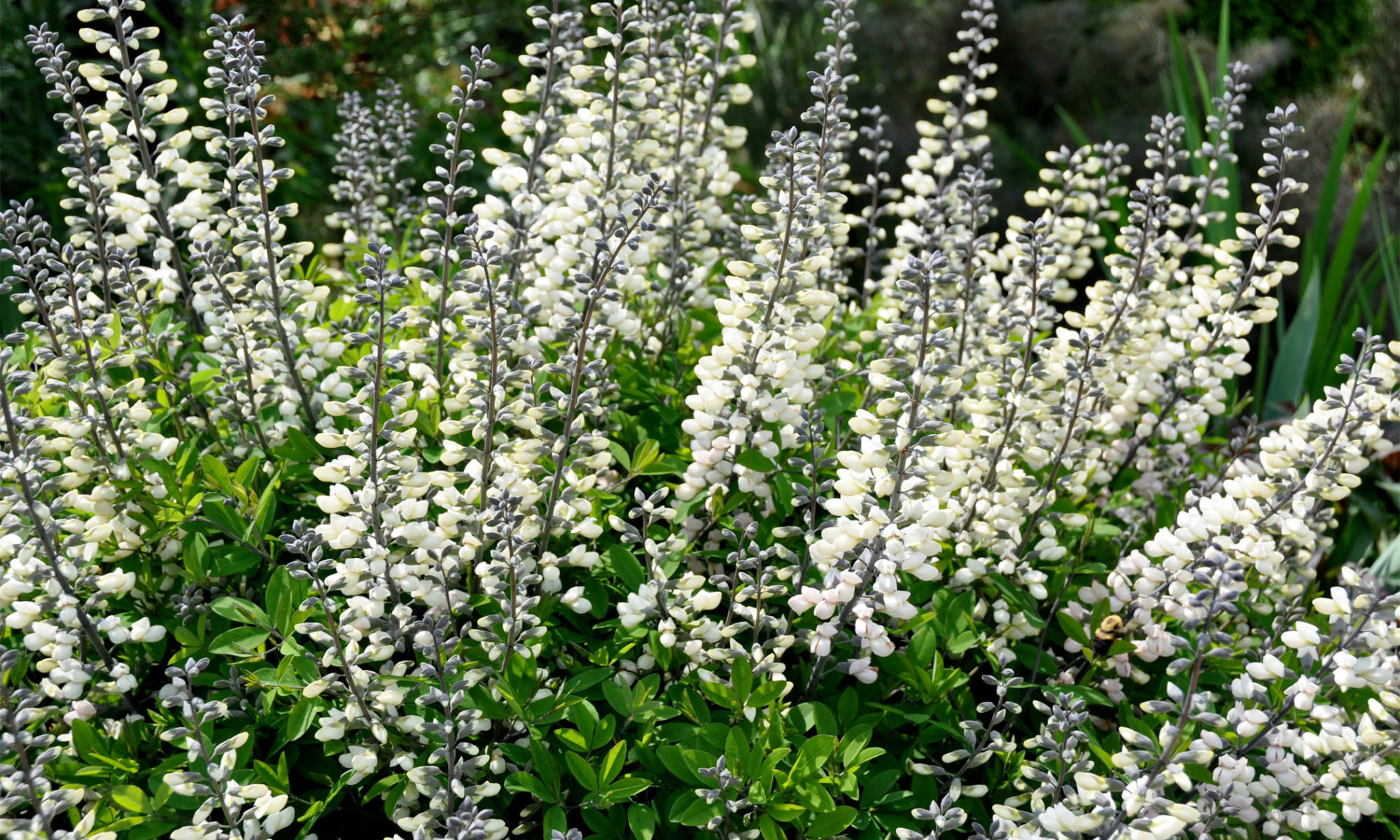
Submitted by Dr. Sue Hamilton and Faye Beck
Baptisia, commonly called False Indigo, may be the plant for you if you are looking for a fantastic, old-fashioned perennial that is both beautiful and tough.
Baptisia is a native American wildflower and a member of the pea (legume) family. It grows up to 3 feet tall and just as wide. Its striking vertical form and ability to serve as a focal point when blooming each spring can make this plant a garden star. In Tennessee, its spiky blooms usually last 3 to 4 weeks during April. It also makes an attractive space filler during the summer. The plant’s showy, pea-like seed pods add to its appeal as the pods are retained well into the summer.
Baptisia requires full-sun for best performance, although the white form tolerates partial shade. It grows best in deep, rich soils but is tolerant of poor soils. Baptisia is actually native to open prairies and can live for decades. The plant’s strong, fleshy root system allows it to be quite drought resistant. They are perfect plants for xeriscaping.
Baptisia should be used where its structural form can be appreciated; for example, planted among groundcovers that highlight their best attributes. Some favorite subservient plants for Baptisia include Artemisia ‘Powis Castle’, various low-growing veronicas, Iris tectorum, Acorus, various selections of sun-tolerant Hosta, and Ranunculus (Golden Buttercup). Baptisia also makes a perfect companion for early spring-flowering bulbs, as they can be timed so that their stalks emerge just after the bulbs have finished. Because Baptisia develops such a thick canopy of foliage, it would be hard to achieve a simultaneous display of bulbs and Baptisia in the same space, but successional planting produces great garden color.
Popular selections include the blue-flowering species Baptisia australis, B. minor, B. ‘Purple Smoke’; the white-flowering species B. albescens; B.alba var. macrophylla, and B. alba var. alba, B. ‘Wayne County Form’; the creamy yellow-flowering species B. bracteata var. bracteata, B. bracteata var. leucophaea, B. ‘Carolina Moonlight’; and the bright yellow-flowering species and variety B. sphaerocarpa ‘Screamin Yellow’. Freshly sown Baptisia seeds germinate easily and quite fast, usually in two weeks. If seed pods are not removed in a timely manner, many seedlings will sprout the following spring. If different colors are near each other, they freely hybridize, so it’s possible to have unusual color combinations.
Baptisia can also be propagated from stem cuttings. Most root easily in spring when the growth is soft, but the success rate drops off to zero as the plants harden. Cuttings should be dipped in a rooting hormone, then kept in high humidity until they root, usually about 8 weeks. You can divide Baptisia in early spring or fall, but care must be taken to make a deep and clean cut of the roots with a sharp spade and to provide abundant water upon transplanting. Baptisia resents being transplanted and may wilt until the roots adjust; however, container transplants do well.
Dr. Sue Hamilton is on the faculty in the University of Tennessee Department of Plant Sciences and also serves as Director of the UT Gardens. Faye Beck is a Tennessee Master Gardener from Knox County. The University of Tennessee Gardens located in Knoxville and Jackson are part of the UT Institute of Agriculture. Their mission is to foster appreciation, education and stewardship of plants through garden displays, collections, educational programs and research trials. The gardens are open during all seasons and free to the public.
See http://utgardens.tennessee.edu/ and http://westtennessee.tennessee.edu/ornamentals/ for more information.
Contacts:
Patricia McDaniels, UTIA Marketing and Communications Services, 615-835-4570